Bid Lifecycle
Guidance notes to support your bid writing training for the module on the Bid Lifecycle.
This module is designed to improve bid team cohesion, through:
– Achieving a common understanding about writing proposals
– Demonstrating that proposals are a key part of the sales process
The sections covered below are:
2. Proposals Are Part of the Sales Process – an overview of the entire bid lifecycle
3. Bid – No-Bid Decision – assessing your chances of success
4. Competitive Tendering: PQQs, ITTs etc. – overview on the different types of tenders
5. How Public Sector Bids Are Evaluated – points are the battleground
6. Evolution of Proposal Best Practice – the innovative ideas from the 60’s that are still relevant today
7. ITT Competitive Analysis – assessing how you stack up against the competition for your next tender
8. An Effective Proposal Development Process – overview of the proven, repeatable, process steps
9. Why Do Proposals Fail? – what you need to do to succeed
1. Proposals vs. Technical Reports
Technical reports do not make “easy reading” for an evaluator because they tend to lack structure, can be excessively wordy, and lack effective use of graphics.
Faced with reading this sort of material, evaluators struggle their way through it, and reward your team’s efforts with average marks. Not enough to win the bid.
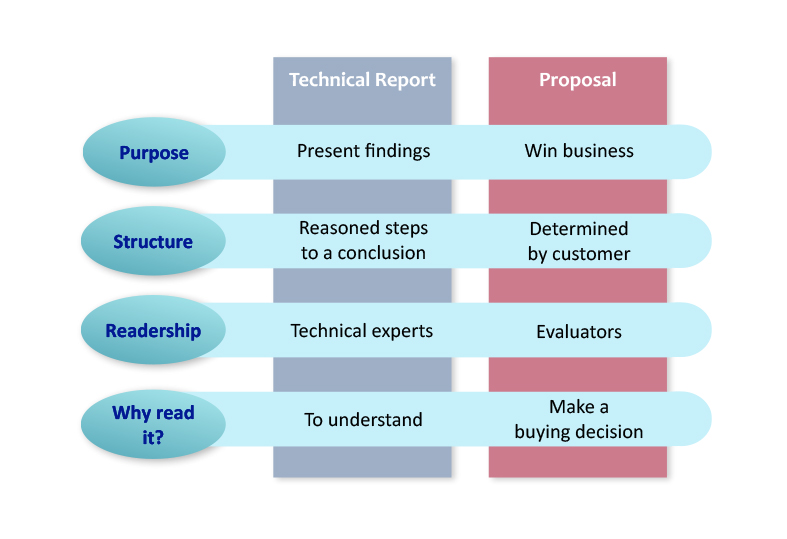
Why does it matter?
As a proposal is a sales document, it part of a competitive sales process. Accordingly, it requires a different approach, than for writing technical reports, to achieve success.
Let’s take a look at where it fits in the sales process.
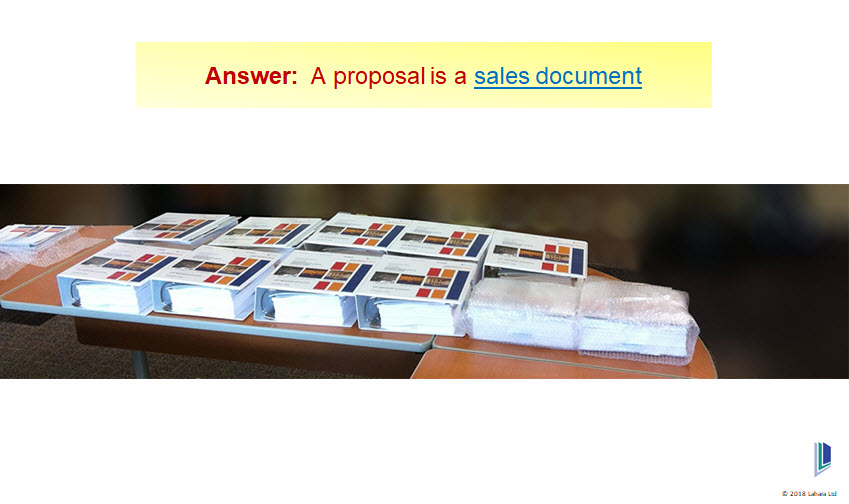
2. Proposals are Part of the Sales Process
There are three distinct phases, in the sales process:
- Sales capture (see the green boxes below)
- Proposal development and production (blue boxes)
- Contracting and delivery (yellow and red boxes)
And five key milestones.

3. Bid – No-Bid Decision
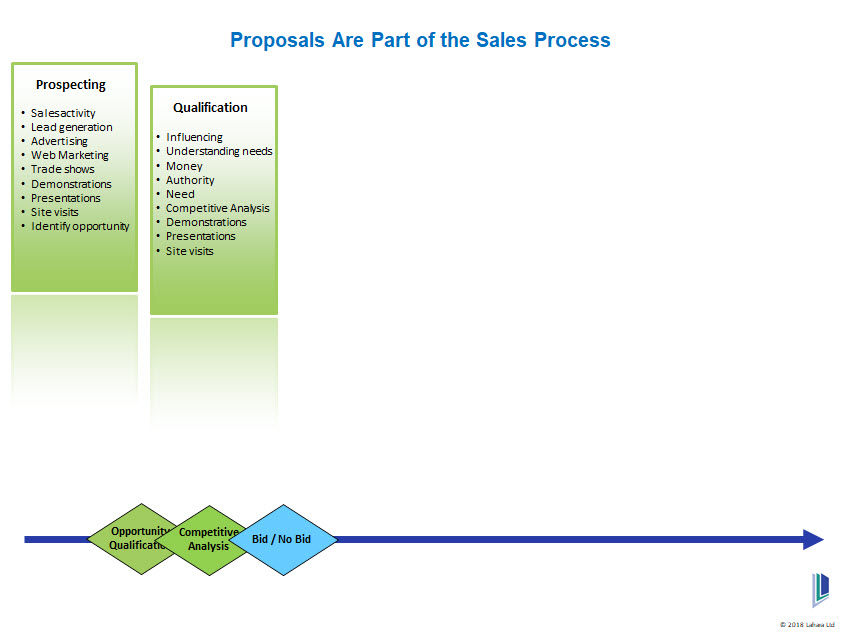
The process shown below is simple and quick to do. Reading from left to right, in the top row of green diamond- shaped boxes, an answer of “yes” to all the questions provides a clear indication to bid.
Wherever there is “no, then there is a suggested way, in the grey and red diamond shaped boxes, to mitigate that weakness.
If the weakness can’t be mitigated, then you should consider no-bidding that opportunity. Or at the very least be fully prepared to bid and lose it.
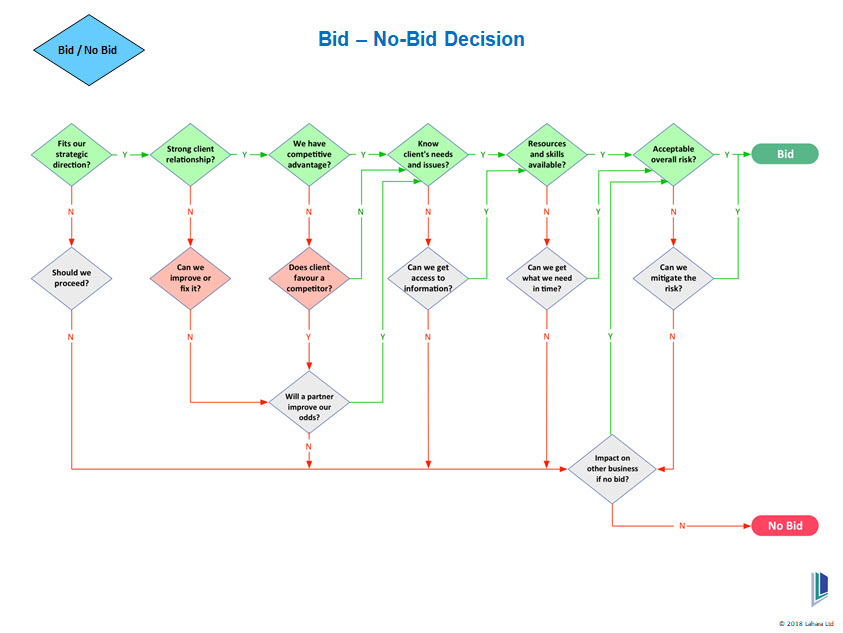
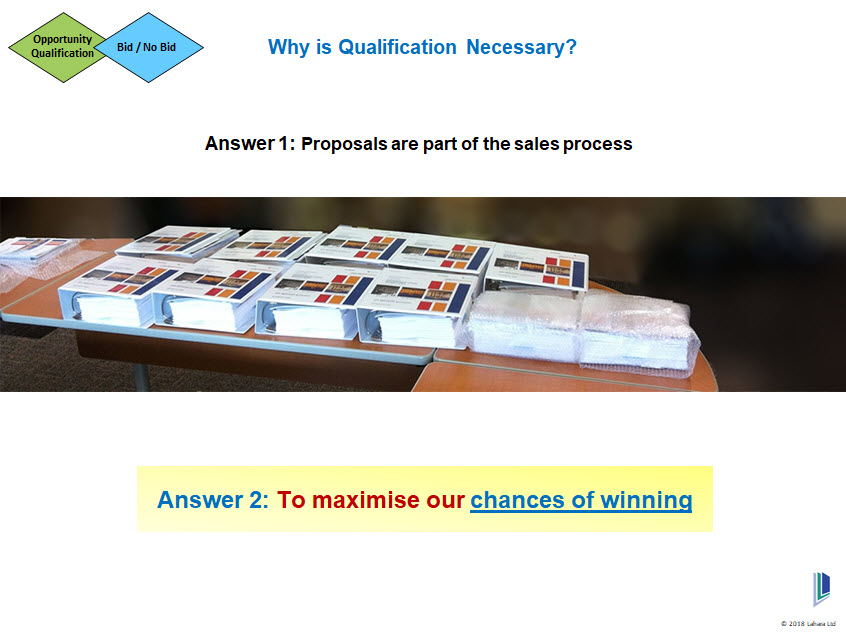
4. Competitive Tendering PQQs and ITTs
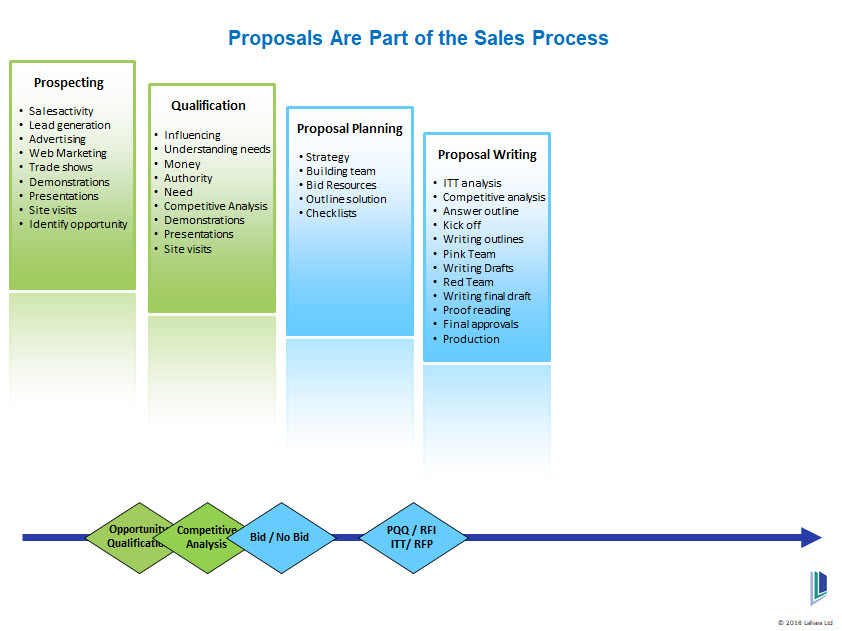
PQQ – Pre-Qualification Questionnaire
Used to collect qualification and technical information from suppliers in order to:
- Evaluate the supplier base
- Narrow the field of competition to qualified suppliers
CCS – The Crown Commercial Service
SQ – Selection Questionnaire
RFI – Request for information, used when you think you know what you want but need more information from the vendors.
It will typically be followed by an RFQ or RFP. If they proceed to Invitation to Tender as a result of this RFI.
RFQ – Request for Quote is commonly used when you know what you want but need information on how vendors would meet your requirements and/or how much it will cost.
RFP – Request for Proposal is used when you know you have a problem but don’t know how you want to solve it.
ITT – Invitation to Tender
This is the most formal of the “Request for” processes and has strict procurement rules for content, timeline and vendor responses.
- Is used to collect detailed technical and commercial information from pre-qualified suppliers
- In the form of a private offer
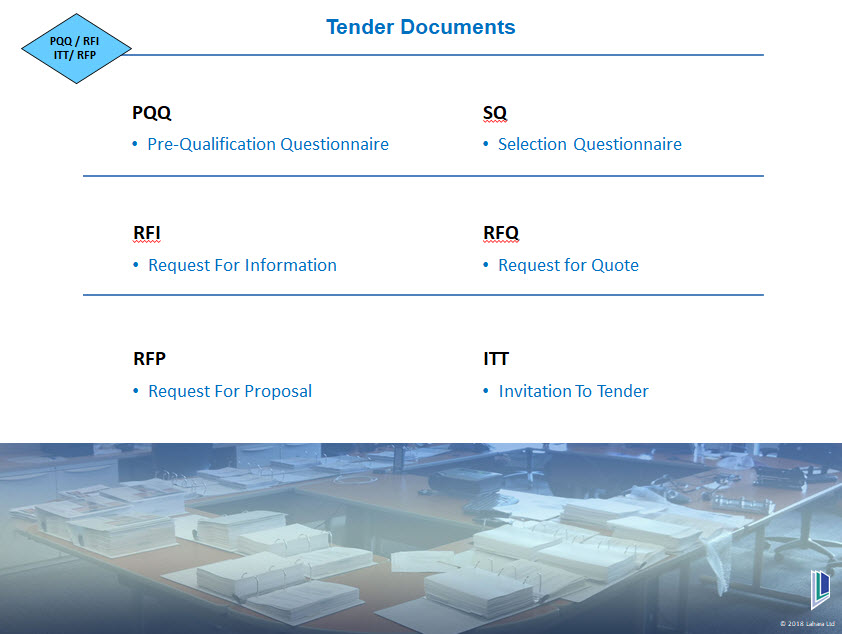
In the example below, for this particular ITT, they have provided additional instructions that focus on ensuring a high quality response.
Most notable is the instruction to “answer the question”, clearly indicating that, in their experience, often people don’t.
The other notable instruction is to “pay attention to the evaluation criteria”. Sometimes the criteria will be quite explicit where the marks are going to be awarded.
Other times it will say a high score will be given for an answer that give a “high confidence of successfully delivering requirements”.
That leaves it up to you to demonstrate that you know what that means, and that you can prove you can successfully deliver it.
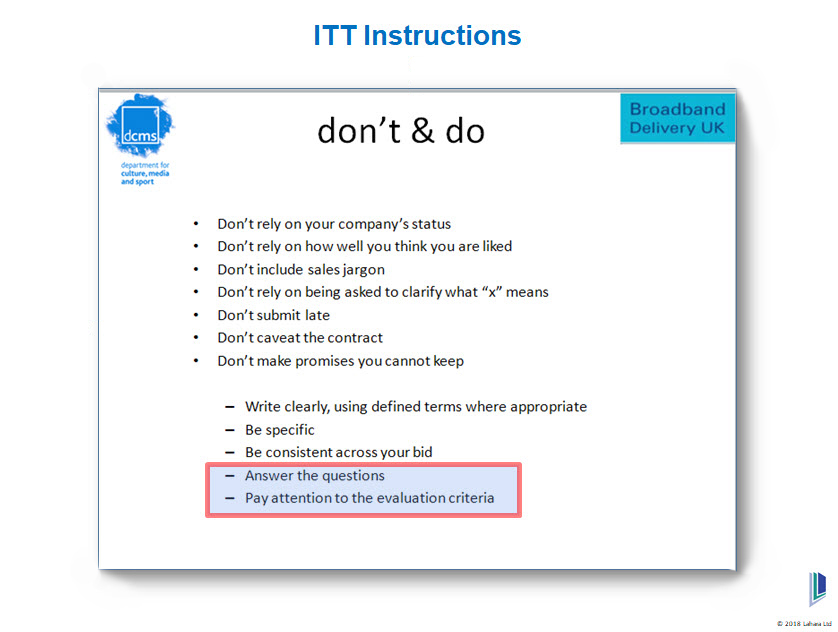
5. How Public Sector Bids Are Evaluated
• Each question taken in turn
• Discuss what they are looking for in the answer
• Answer from all suppliers are read and discussed
Stage 2: Scoring Process – Questions they ask:
• Does it fully answer the question?
• Is there evidence to back up the answer?
• Does it provide assurance on all aspects?
• Scoring is done solely on what is on the page – not on prior knowledge
Stage 3: Moderate the score
• The score is then agreed collectively
• Evaluation panel agrees and moderate scores
- Done by civil servants
- Must be seen to be unbiased towards any bidders
- Must follow evaluation rules/process to the letter
- (Supposedly) Leading to an objective scoring process
- Need outcomes to be justifiable and evidenced
- (Supposedly) Mechanical process to limit scope for subjective assessment
- Want to minimise scope for challenge
- Done by Crown Commercial Services (CCS)
- Each PQQ/ITT on the platform is managed by a buyer within the buyer organisation
- After the closing date & time, the PQQ/ITT will be formally opened and evaluated
- Tender responses will be scored by an evaluation panel appointed by the Authority,
for all criteria other than commercial, using the provided scoring model/s - Terms of reference meeting: panel meets beforehand. Are provided with an overview of what the ITT is about.
As you can see in the blue shaded box on the left, 50% of the score is for commercial. That is then further broken down into two subsections, and seven sub-subsections.
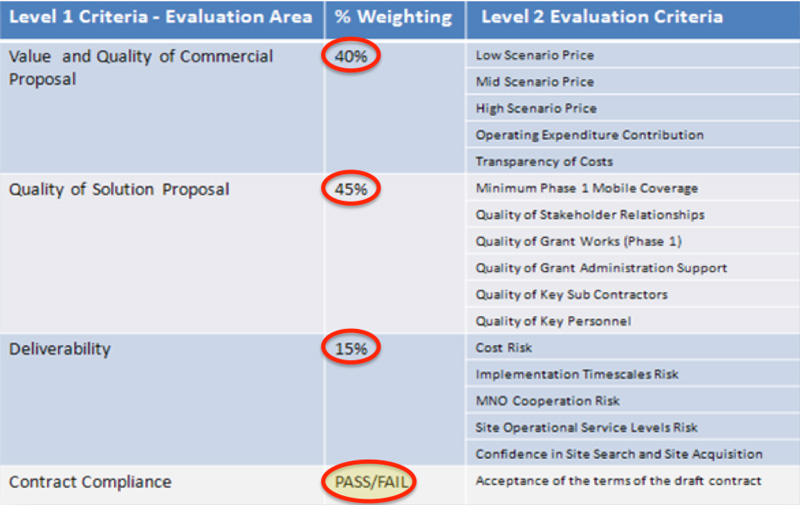
As you can in the blue shaded box on the left, 50% of the score is for commercial. That is then further broken down into two subsections, and seven sub-subsections.
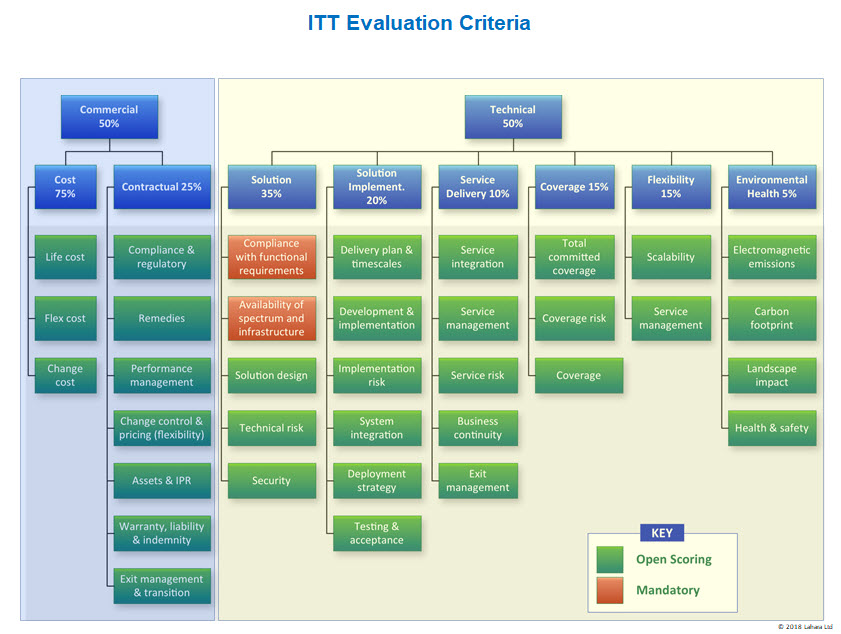
For a proposal as complex as this, it is essential to analyse the scores in detail, and create a descending list, from the highest to lowest scoring answer.
This will give you an order of priority for which questions you need to focus your bid writing efforts to gain the highest possible score, and those that are pass/fail.
In addition, you will notice that a number of the questions are not scored, simply requiring information. The question types are identified in the “category” column, second from the left.
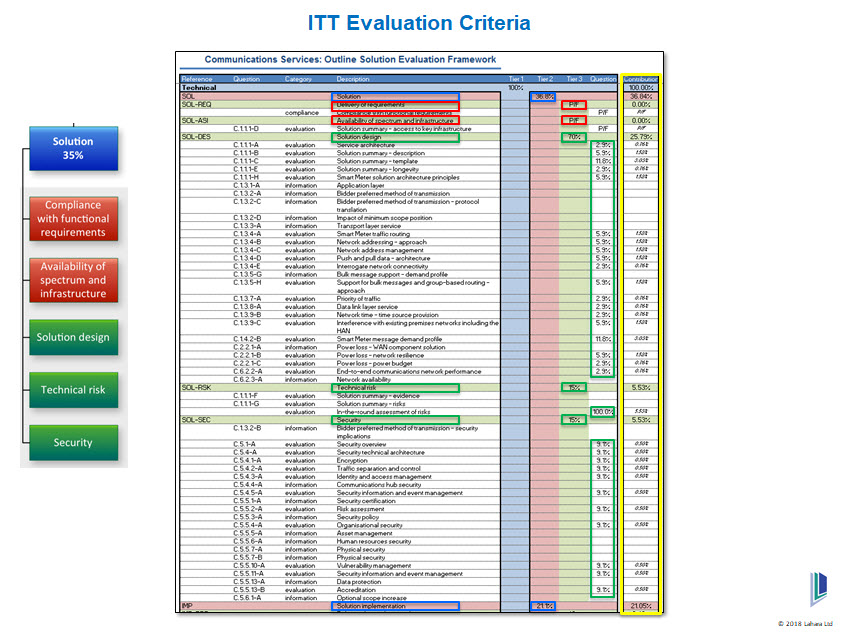
How that is applied is as a multiplier against the possible highest score for each answer, as shown below.
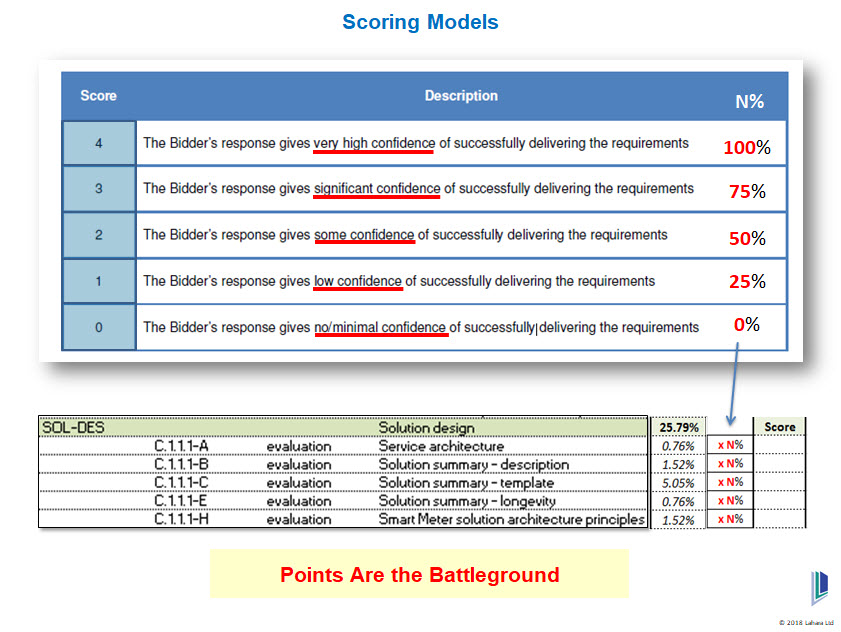
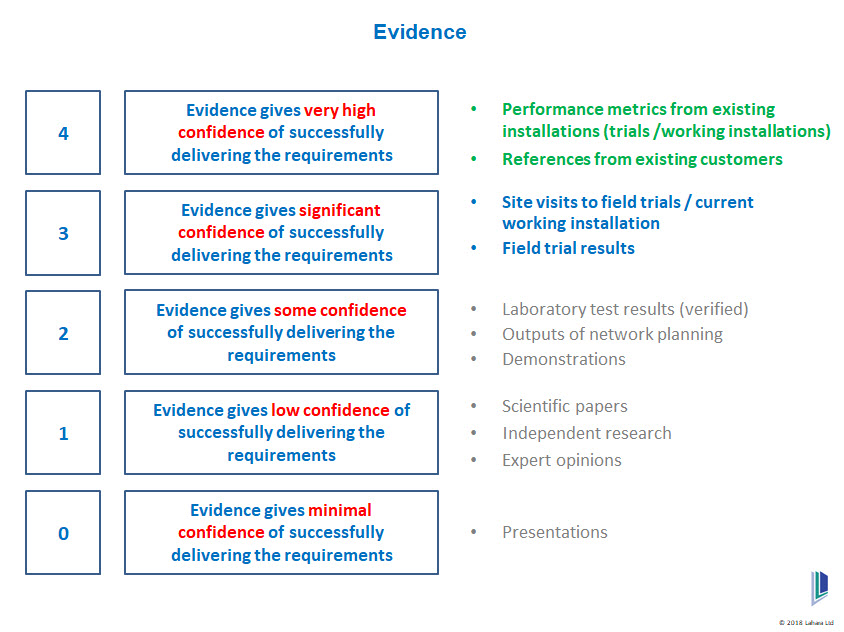
In the example below, every point you gain is worth £125,000, and you need to make up that 4% difference in the technical section.
Obviously, every point gained above their score in the technical section, will compensate for your higher price. But the value, to you, of knowing how to produce high scoring answers is worth at least £500,000 in this case.
It is worth even more if you gain a technical score that is more than 4% higher than the lowest price winner, and you win the bid.
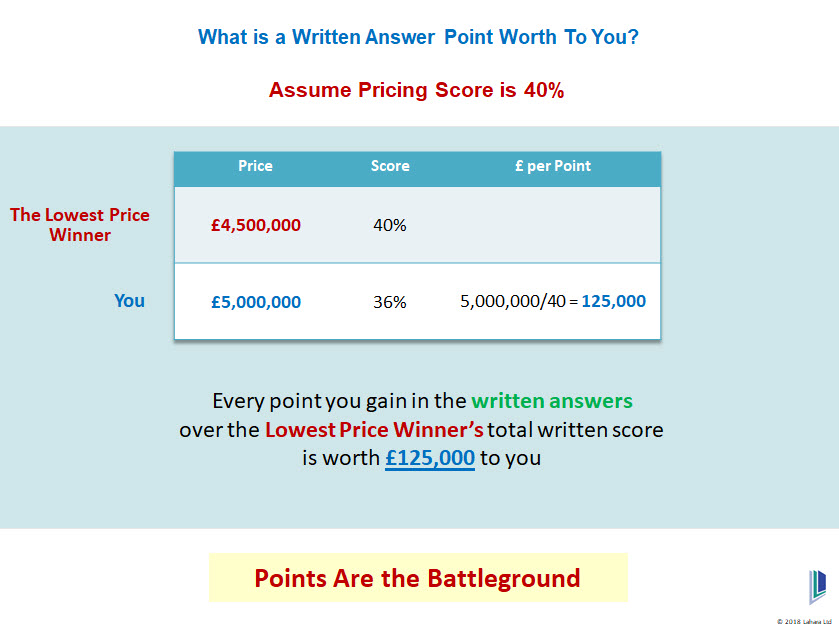
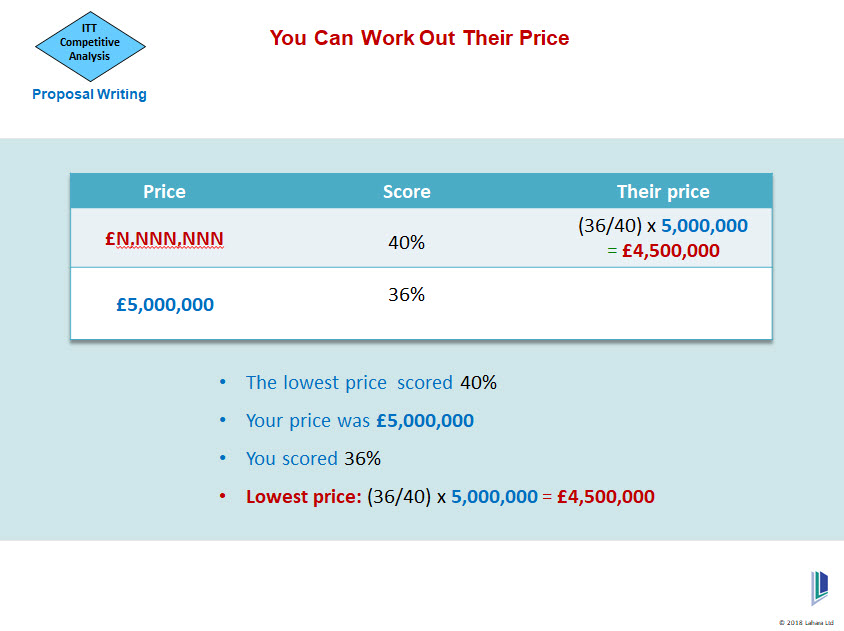
6. Evolution of Proposal Best Practice
Hughes Aircraft involved in producing massive bids for the US government, costing many millions o fo dollars. They conducted research into how to consistently achieve high evaluation marks.
From that work came key best practice concepts such as storyboarding (answer outlines) , the importance of using graphics, and customer-focused writing. These concepts have proven themselves over time.
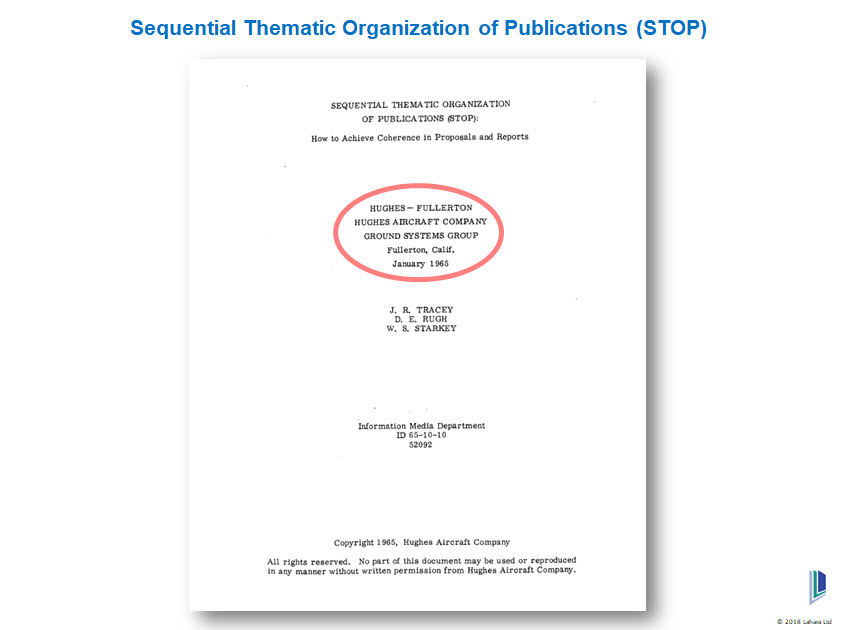
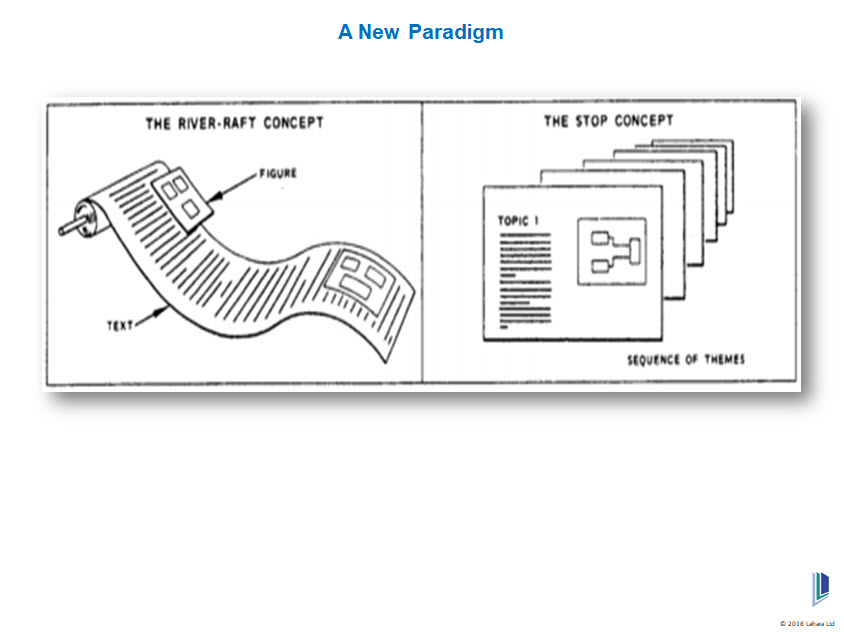
- Topics or themes
- Succinct text
- Extensive use of graphics: diagrams, charts, tables
- Informative captions
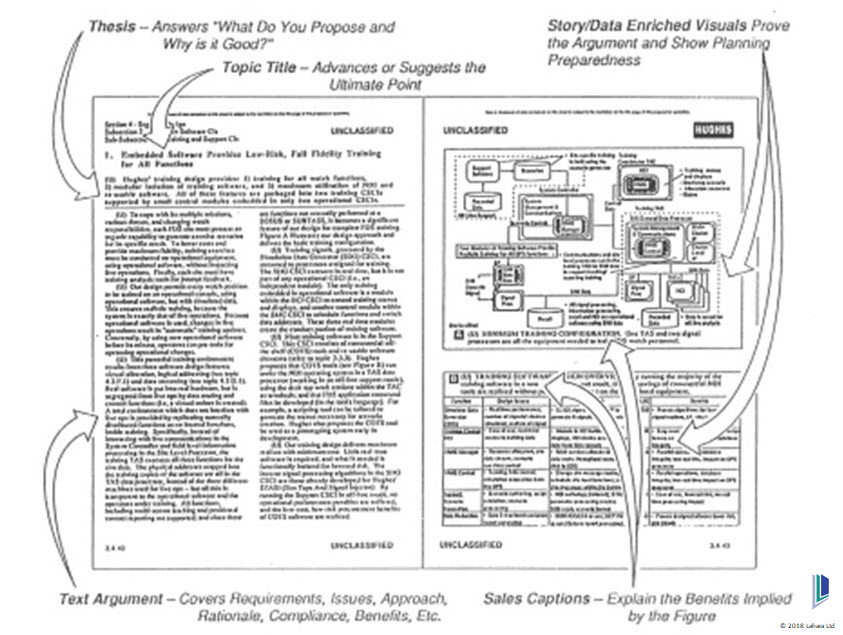
Once the STOP storyboarding technique was adopted, it didn’t take long for Hughes-Fullerton’s win-percentage to mushroom.
Soon these techniques became widely adopted, spread at first by Hughes’ proposal-teaming efforts with other companies, and then by its own momentum as word got around.
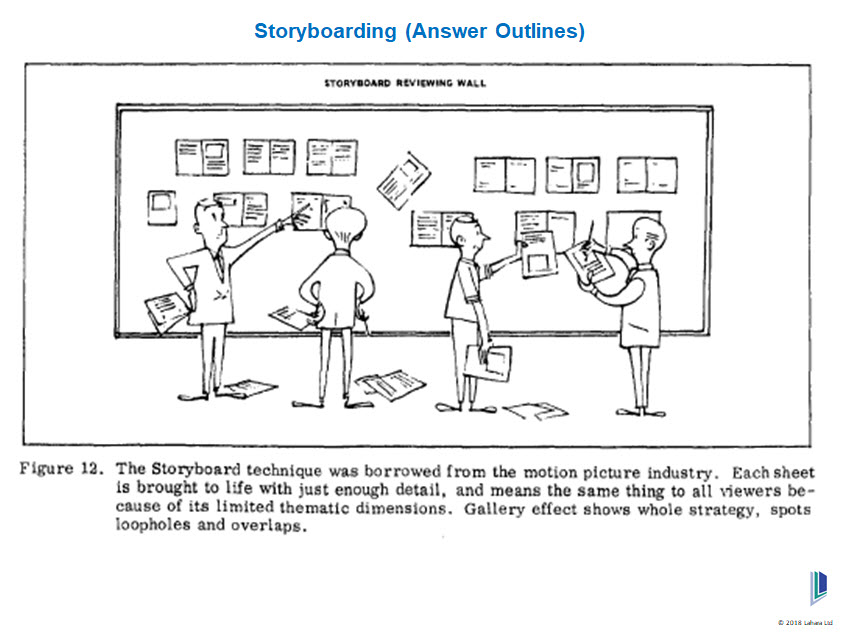
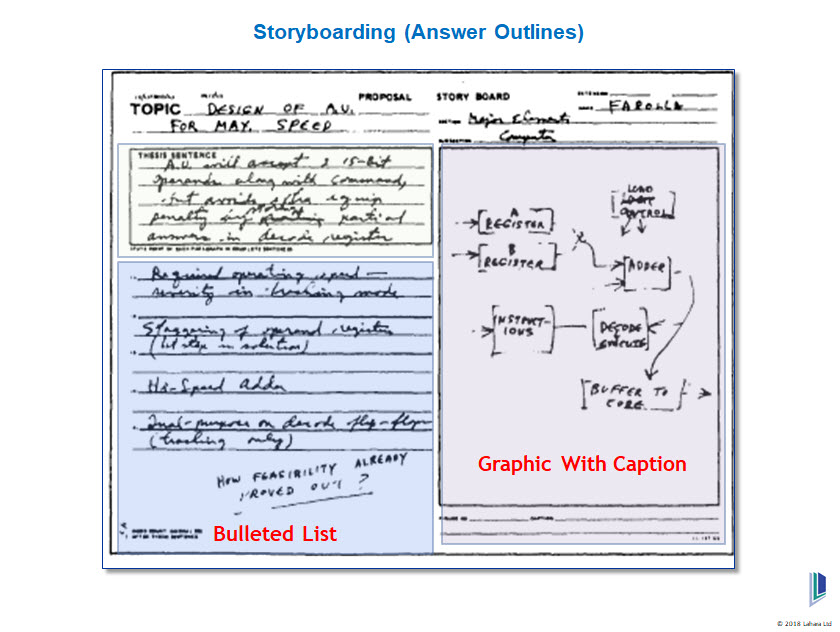
Acknowledgement: the STOP report excerpts belong to the copyright owner,
Raytheon Company, dba Raytheon Systems Company, formerly Hughes Aircraft Company.
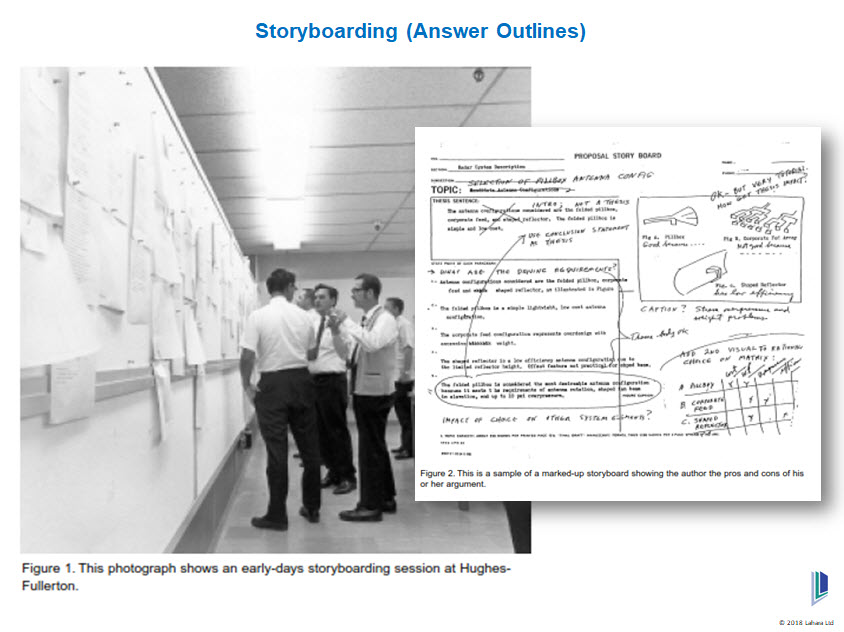
- Proposal manager can guard against unpleasant surprises when the authors’ inputs finally reaches his desk
- Removing the surprises that could activate management’s panic button, exposing the need for agonising, eleventh-hour revisions
- Ensuring each author knows exactly the required answer structure and content before getting down to generating the written answers
- Ensuring the strong points of your approach are made crystal clear to the proposal evaluator
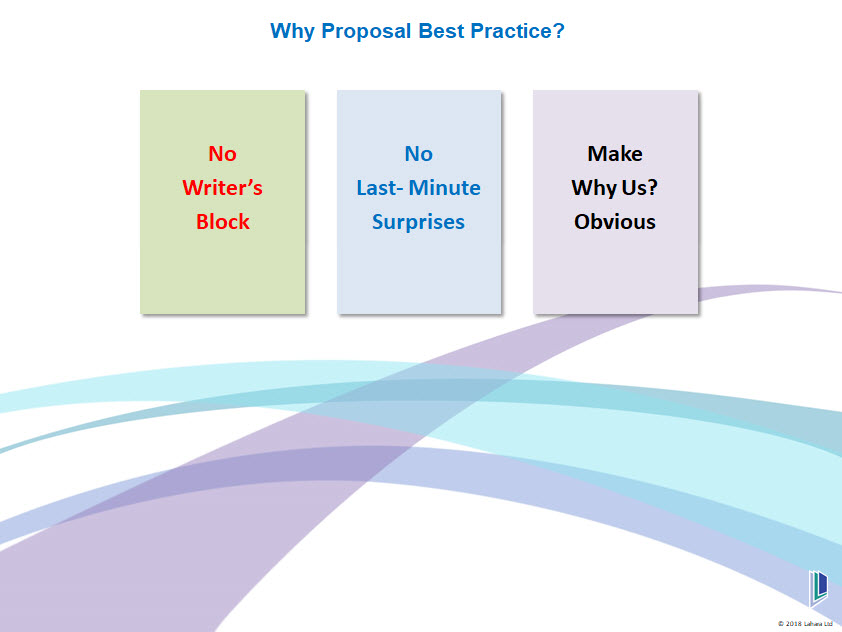
7. ITT Competitive Analysis
Accordingly, when an ITT comes out, it is highly recommended to take a couple of hours and analyse how your response might be viewed by the customer, and also those of the competing companies.
That is what an ITT swot is all about. It may be a subjective process, but time and again it is proven to be surprisingly accurate.
At the very least, it will give you a clear idea where to focus your team’s bid writing efforts.
We start by breaking down the ITT and entering the scores for the major sections and subsections. Quickly, without too much thinking about it, assign a score for your competitors, based on how you think they will be performing. If you’re not sure score them high.
Colour-code the scores:
- Green – for where you score the highest
- Red – for where you score the lowest
- Purple – when one of your competitors also scores the highest
(also can be where you too score the highest) - Orange – for where your competitors score the lowest
(also can be where you too score the lowest) - If you all score the same – no colour
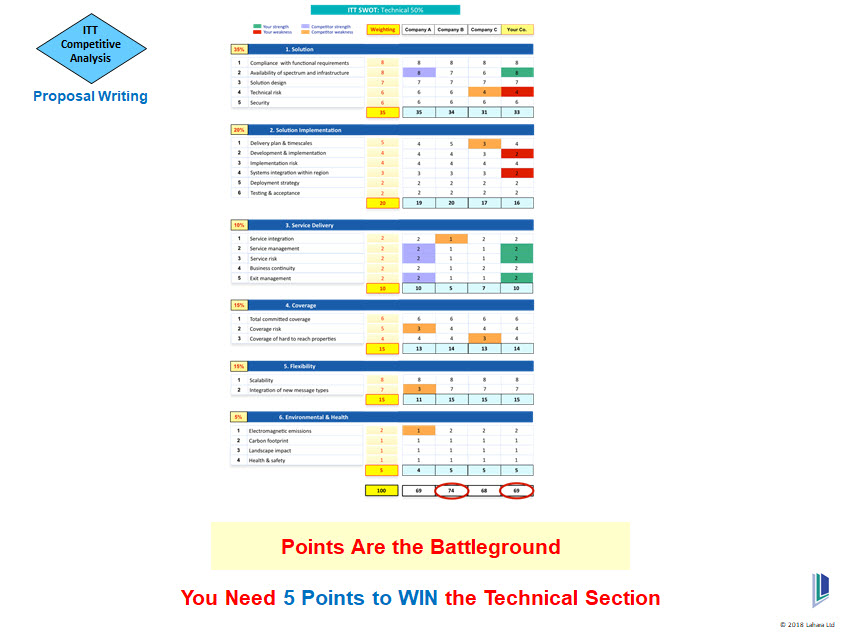
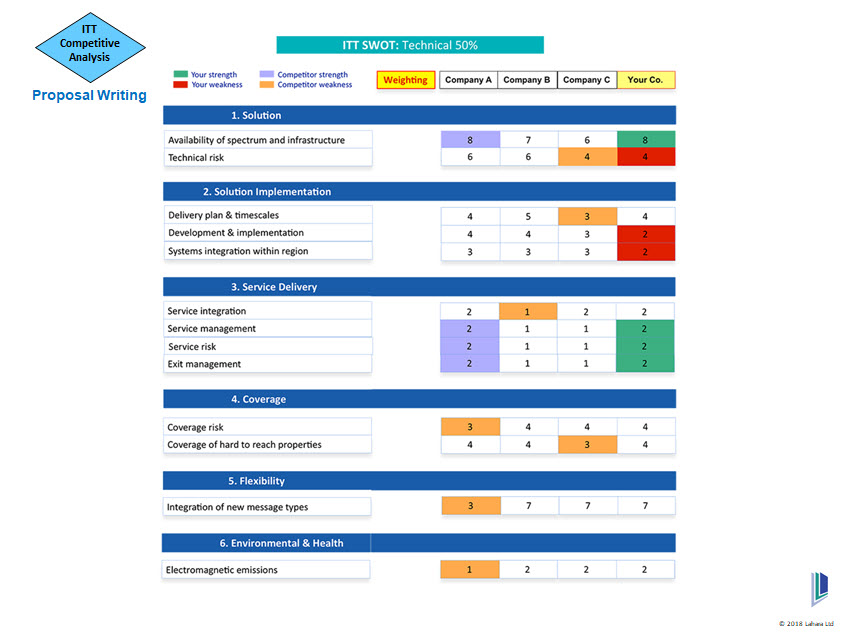
Now you can see where to focus your efforts on answers where you will be weak, and the answers where the competitors are likely to be weak.
You’re looking for any answers where you can easily gain points against the competition.
Of course, you want to focus on the questions for the competitors are stronger. This approach makes it much easier to identify those questions as well.
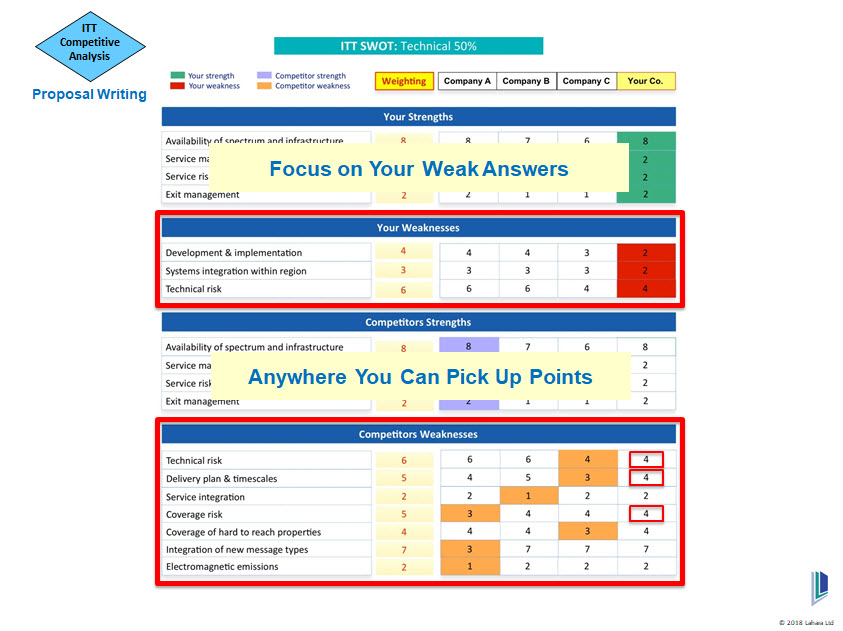
8. An Effective Proposal Development Process
- Proposal planning
- Proposal writing
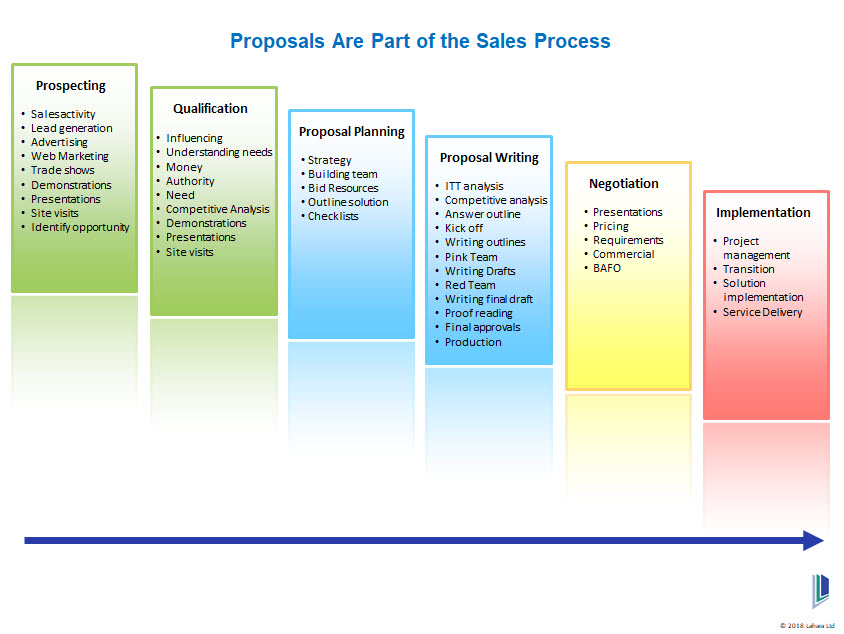
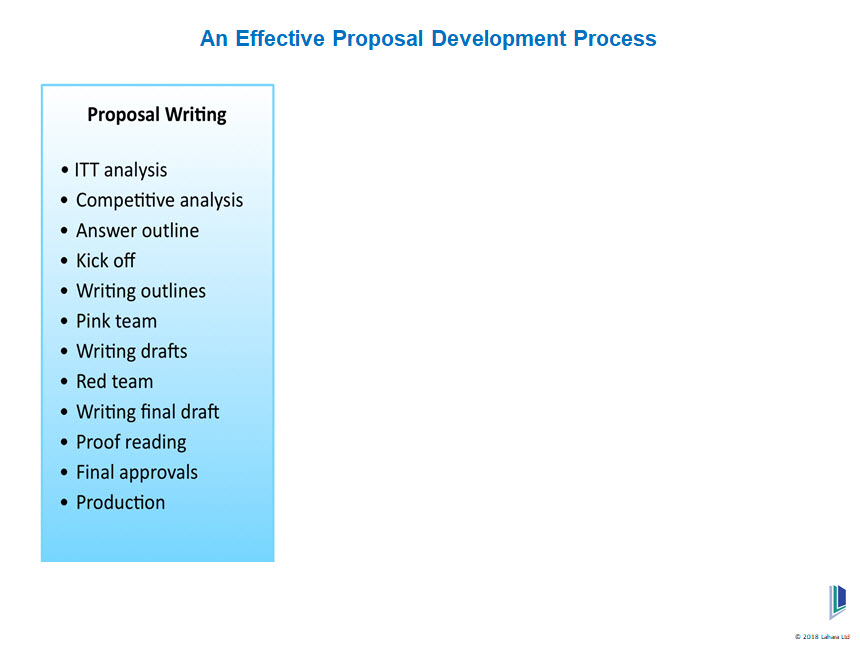
In my experience I have often found the most effective process is to print out the entire ITT, and sit down and read it end to end, underlining all the key points and instructions.
As part of that process, is essential to produce an ITT checklist. This can be a spreadsheet that contains all the questions, instructions, and columns for the processes that you will be using to produce the ITT and including the reviews processes.
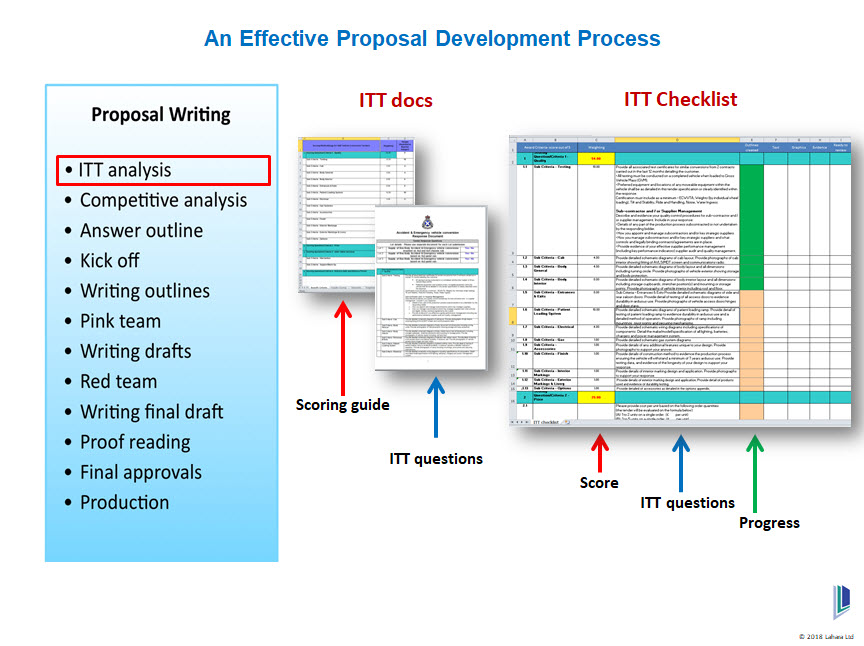
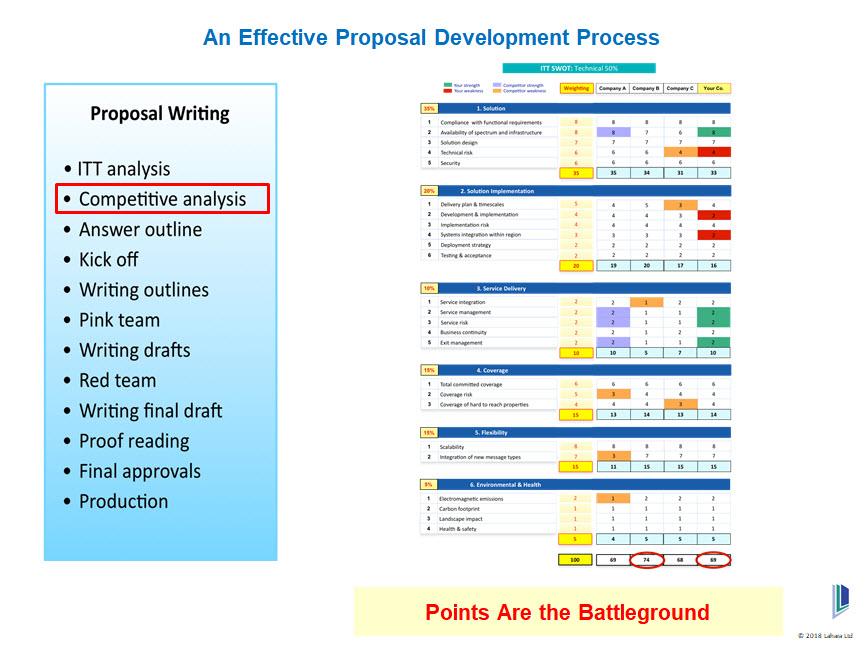
Depending on the number of questions, this can take a few days to complete.

At this stage, the answer outlines can be sent to the designated authors for them to commence work, with an agreed deadline for their production.
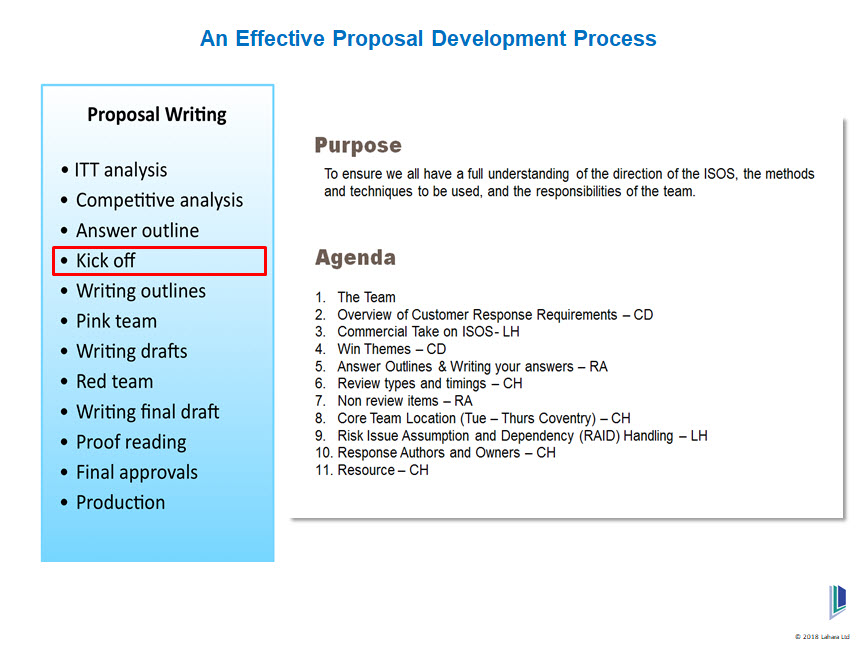
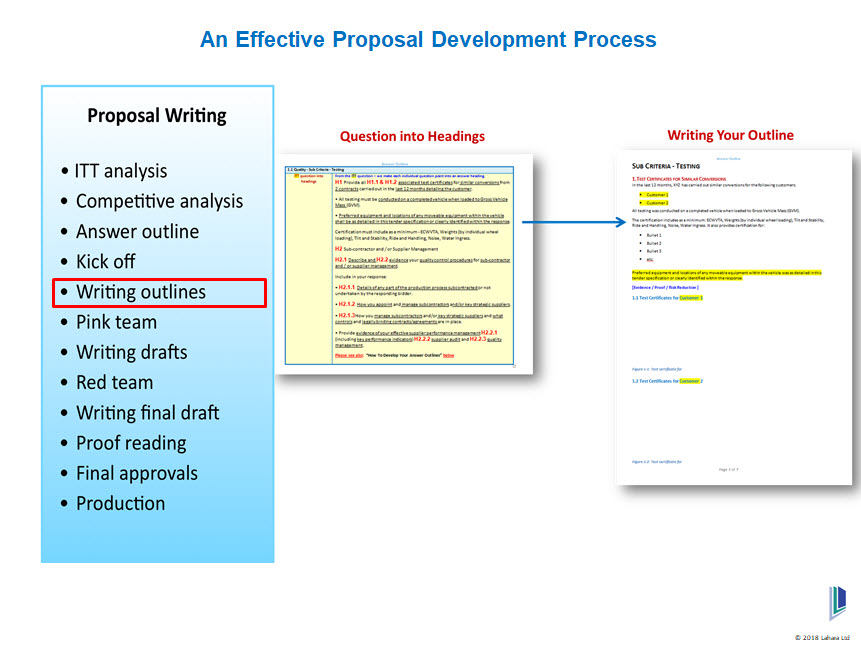
The answer outline review is known as a Pink Team, and it is one of the key first steps to raising your game in producing a high-scoring, winning proposal.
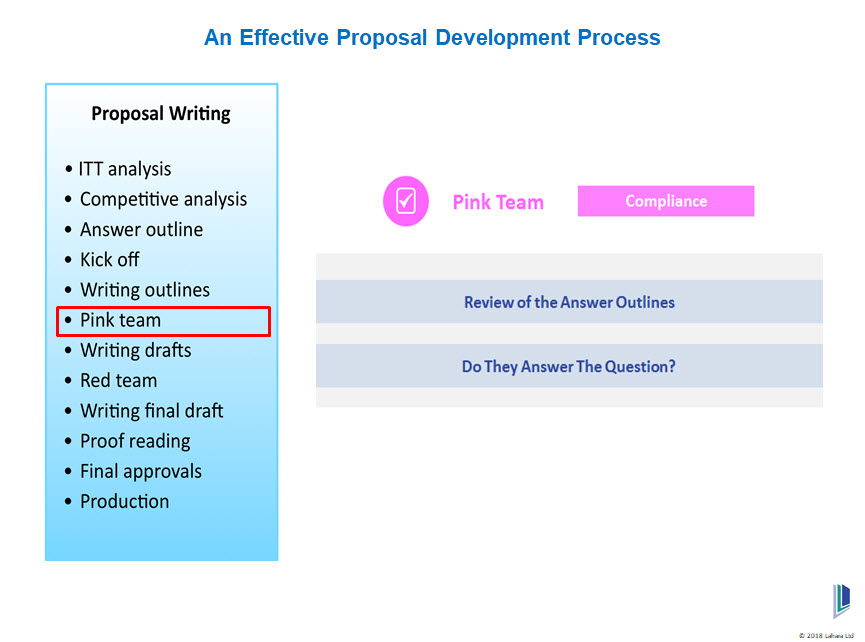
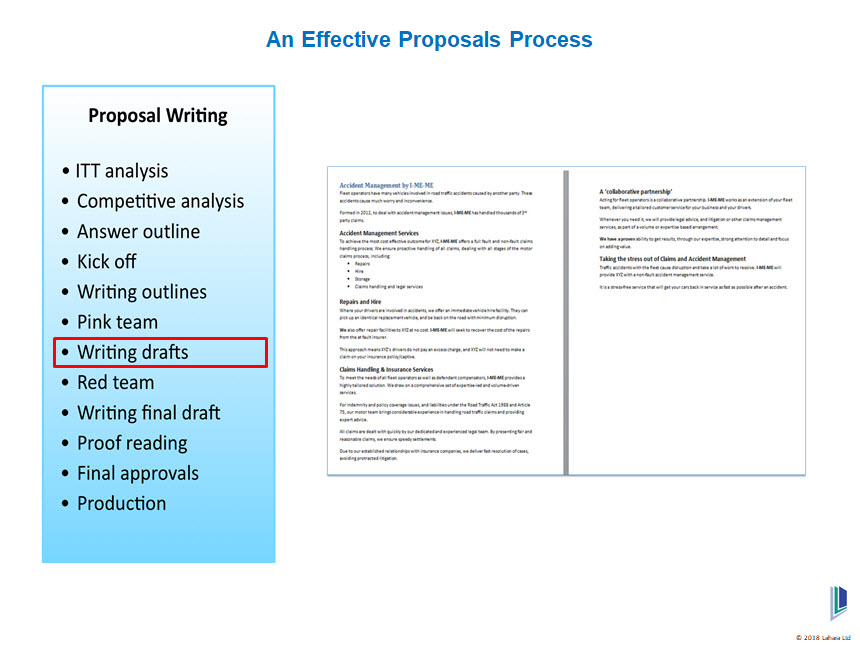
The first draft review is known as a Red Team, and it is the key second step in raising your game to produce a high-scoring, winning proposal.
If there is time, is often very useful to have a second Red Team review of the final drafts.
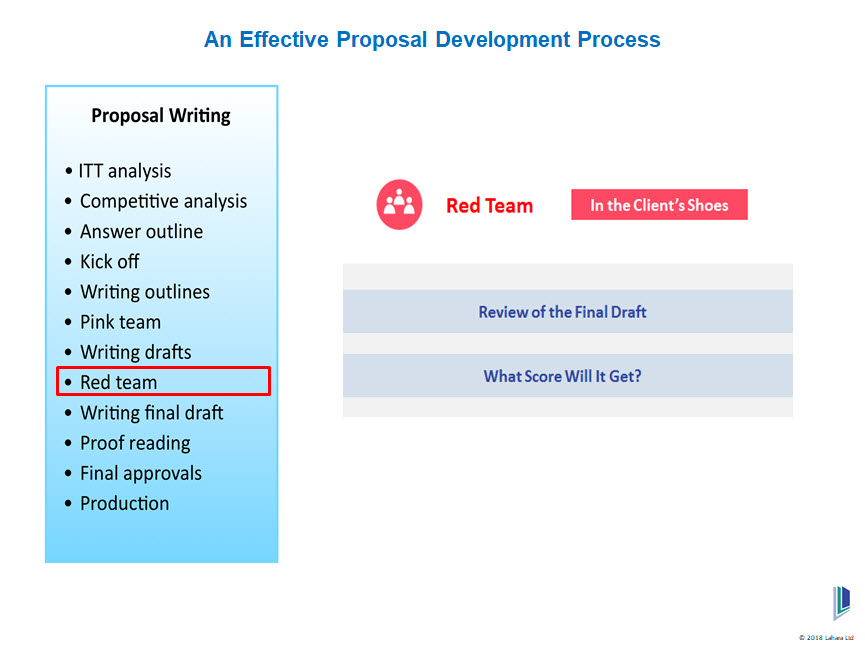
There’s nothing more unprofessional than submitting a proposal full of errors, be they typos or the incorrect heading numbers or caption title numbers.
Errors in a proposal send a strong message to the evaluators about the quality of the work they can expect from you.
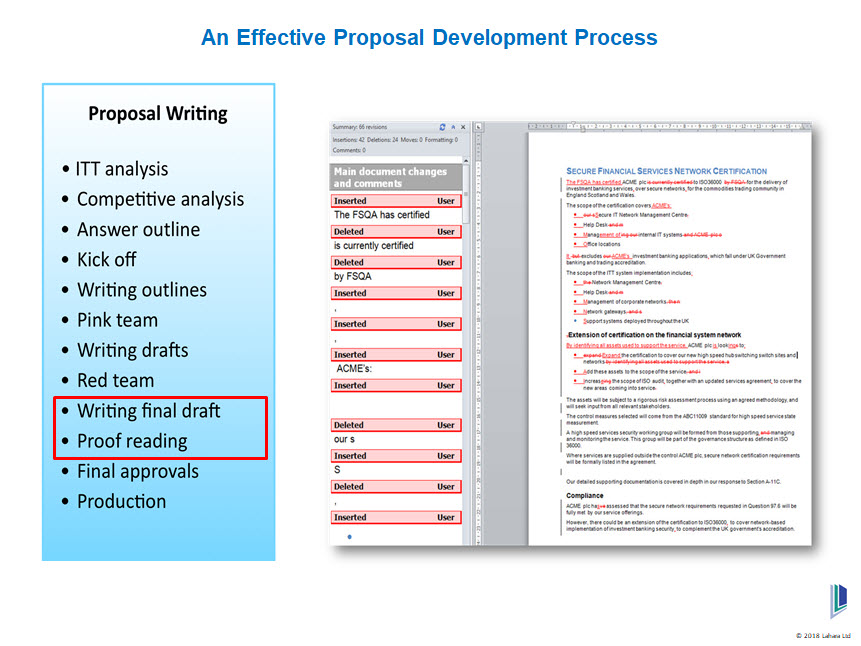
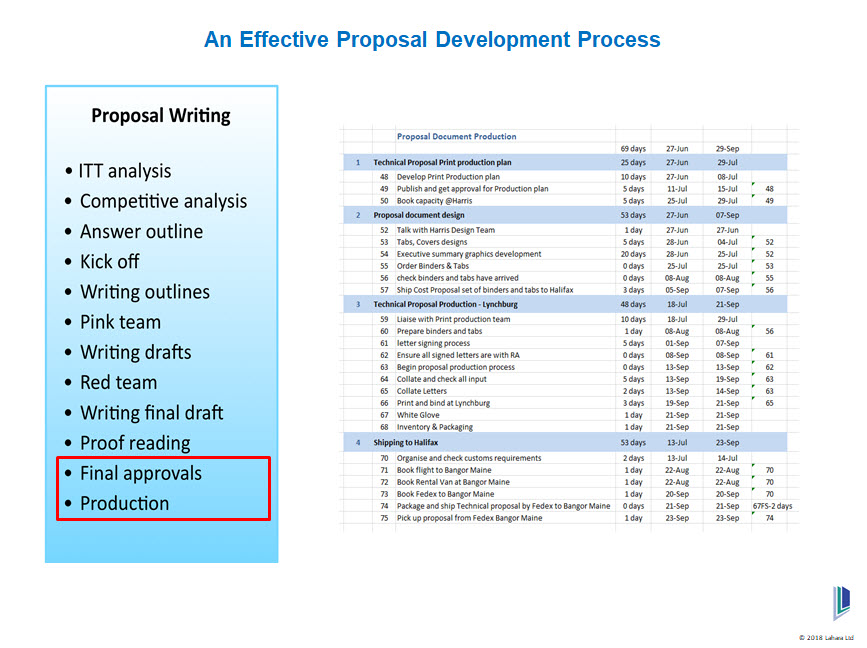
Below is an actual timing for a significant bid, of 200 questions, that was executed using this process.
There is no doubt there’s enough time to do it, and really you have to ask yourself: can you really afford not to do it?
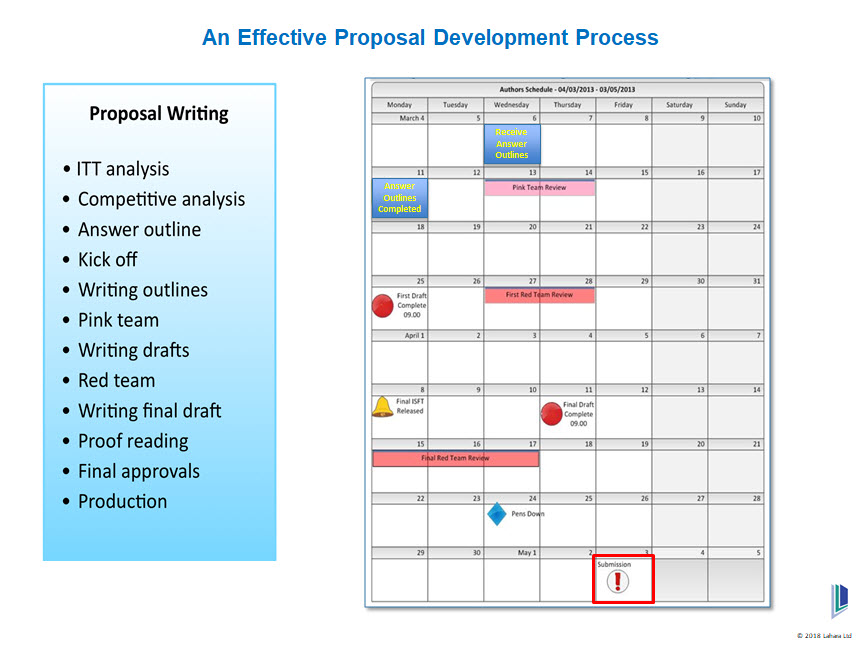
9. Why Do Proposals Fail?
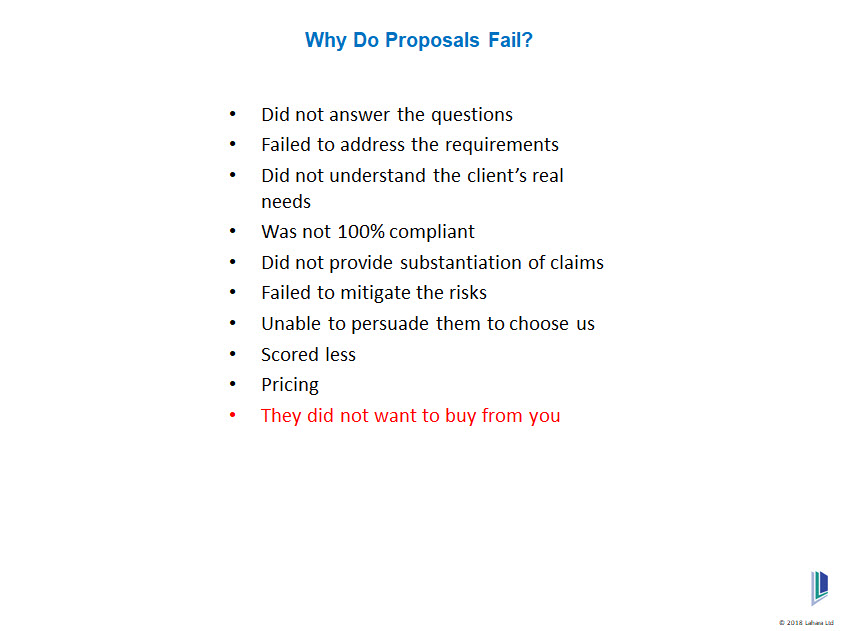
For many companies there’s no real chance that one can be developed, and the results of that are seen in the low proposal win rates.
It’s a company decision whether the bid no-bid decision process is something they want to use.
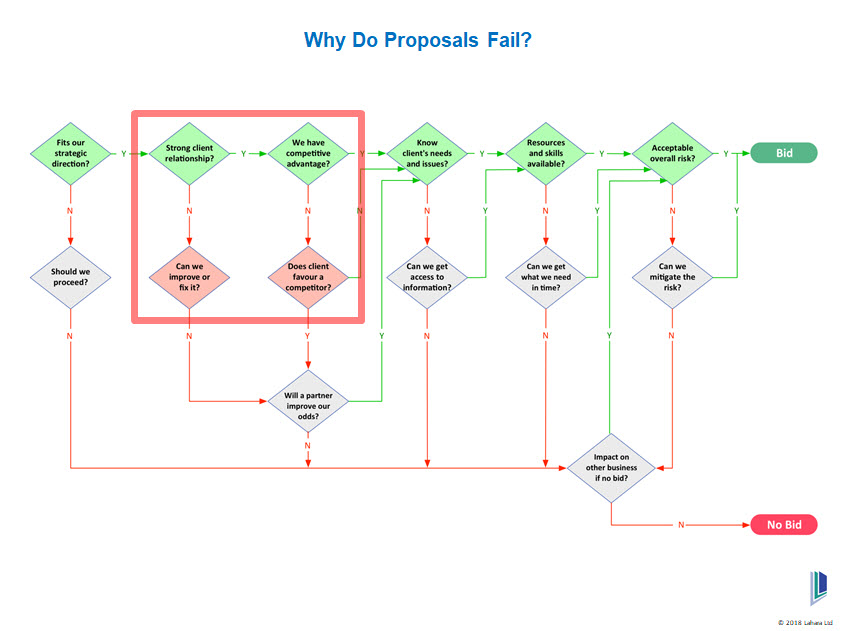
Having said that, there is no one can that can guarantee, no matter what they say, that you will win a proposal. You have just got to do the best that you can.
Below we can see how the Lahara bid writing training processes will address the key issues of why a proposal fails.
